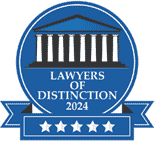What is a Trust And How Does a Trust Work?
 What is a Trust?
What is a Trust?
A Trust is a legal instrument, which holds title to property, subject to certain obligations, rights, and restrictions placed on the property. A Trust is fiduciary relationship in which a party (Trust Maker) establishes a Trust that gives another party (Trustee) the right to manage property that the Trust owns.
What is a Trustee?
A Trustee is a person or entity that is appointed by the Trust Maker (the person or couple that created the Trust) to manage their assets and property. Generally, the Trustee is the same person(s) that creates the Trust for their benefit for estate planning purposes. The Trust instrument or otherwise known as the “Trust Agreement” creates the Trust until they (the creators of the Trust and Trustees of the Trust) are unable to fulfill the role of Trustee. The Trust Agreement will typically pass trust administration to a person(s) or entity upon the Trust Maker’s incapacity or death.
At the time of incapacity or death, the role of administration changes to a Successor Trustee. A Successor Trustee is by and large a trusted family member or friend. The Successor Trustee administers the instructions outlined by the Trust Agreement. The Trust Agreement is a legal document created by the persons wishing estate planning for their family. The goal of the Trust is to avoid probate court and create a smooth transition upon a death or incapacity. People create trust because they want their loved ones to have an easy process if something happens to them.
What is a Trust Agreement?
A Trust is governed by a Trust Agreement, which outlines their wishes upon an incapacity or death such as who should administer their trust and how should inherit their property. In the Trust Agreement, the Trust Maker (creator of the Trust) writes down their instructions upon their death including their property distributions (and their order of preference) and their desired Successor Trustee(s) that will fulfill their wishes upon their death (or incapacity).
The Trust Agreement should plan for unforeseeable deaths of family members to eliminate gaps in the Trust Agreement. Gaps in the estate planning documents (Trust Agreement) will result in probate or unintended consequences. Planning for unforeseeable deaths and disabilities are a major priority of a well-planned Trust Agreement.
The goal of Trust planning is the avoidance of probate court and the ease of administration of a family’s estate upon their death (or a spouse’s death or partner’s death). A Trust Agreement is like a Last Will and Testament because it documents who should receive their assets upon death.
Last Wills and Testaments vs. Living Trust
Unlike a Last Will and Testament, a Living Trust or otherwise known as a “Trust Agreement” or “Estate Plan” avoids court processes called “probate court”. The key to avoiding probate and court issues is transferring a person’s assets into the Trust’s name. Probate court is a court that hears post-death issues such as the following:
-
Determinations of whether a will or otherwise called a “Last Will & Testament” is authentic
-
Outline a deceased person’s assets and liabilities including their real estate property, their financial and investment accounts, and other property claims
-
Spearhead the process where debts and taxes are paid by the authorized administrator or executor
-
Distribute assets consistent with the Will or recover estate assets
Probate court in Kendall County and nearby counties are supervised by an Illinois judge called a “probate judge”. A probate judge is responsible for the court supervised process called “probate court”. The legal requirements of the probate court are outlined in the Illinois Probate Act. See 755 ILCS 5/Probate Act of 1975. The probate judge is responsible for administering a person’s property and to make sure their debts and taxes are paid.
A key difference between a Will and a Trust is privacy. A Trust is a private document, unlike a Will. A Will must be filed at the local courthouse. A Trust is a private document and is generally reviewed by a select group of people such as the Successor Trustee and beneficiaries. Another major difference between a Will and a Trust is court supervision. A Will must be probated through a court process called “probate” to become effective. A Will that is not court administered is not enforceable.
YORKVILLE AND KENDALL COUNTY ESTATE PLANNING AND TRUST ATTORNEY
Peace of Mind Asset Protection, LLC is a division of Gateville Law Firm with offices in Yorkville and Naperville. The lawyers and staff at Peace of Mind Asset Protection, LLC provide peace of mind to families. We also protect assets and provide asset protection and economic security to families in Kendall County such as Oswego, Plano, Yorkville, Aurora, Montgomery, Joliet, Plainfield, Bristol, Newark, Boulder Hill, and nearby areas. Call us today at 630-882-2467 to discuss your trust and estate planning goals or fill-out an online-contact form. We provide appointments via in-person office visits, zoom, and/or in-house appointments. We offer FREE initial consultations. A consultation fee may apply for in-house appointments, which can be credited toward your retainer.
Sources
https://www.fidelty.com/life-events/estate-planning/trusts
https://smartasset.com/estate-planning/trustee
Illinois Probate Act of 1975: See 755 ILCS 5/Probate Act of 1975
http://nolo.com/legal-encyclopedia/Illinois-probate-an-overview.html
Questions?
Contact Us Today
Call 630-780-1034 or fill out the form below to set up a free consultation today:
The use of the Internet or this form for communication with the firm or any individual member of the firm does not establish an attorney-client relationship. Confidential or time-sensitive information should not be sent through this form.
I have read and understand the Disclaimer and Privacy Policy.













